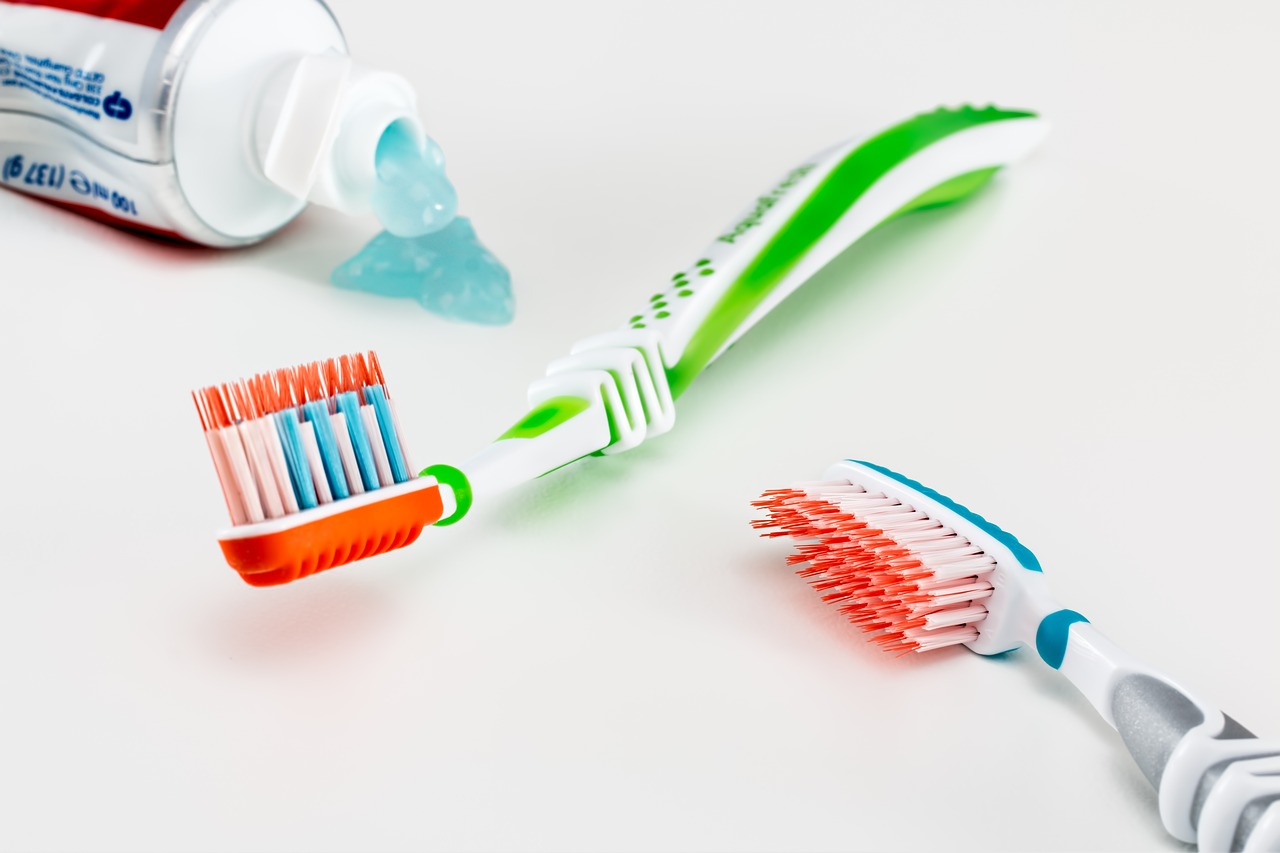Astonishing facts you ought to know about the humble toothbrush
A toothbrush is a toothbrush, right? Not quite! There’s a staggering variety of head shapes and designs to negotiate- a hard toothbrush or soft? Electric toothbrush or manual toothbrush? The range of options can be bewildering- which is why Vitality is here to guide you through everything you need to know to make the best toothbrush decision for your needs.
History of the toothbrush
Mankind has always sought to improve their dental hygiene. From the dawn of time, we have records and evidence of all sorts of tooth-cleansing methods being used, from chewing fibrous sticks to wiping the teeth with powder.
The Chinese Tang dynasty even used a recognisable bristle-style toothbrush! However, we didn’t see the classic toothbrush designed for mass production until 1780, when the company today known as ‘Wisdom Toothbrushes’ was founded.
The humble toothbrush has been through a lot of changes. First, we see the original bone handles fall to cellulose and plastic. Then DuPont revolutionised the bristles, enabling us to use germ-repelling plastic instead of a natural animal bristle.
The toothbrush as we know it was born.
What types of toothbrushes are there?
Today, you can choose from a dizzying array of types of toothbrush. Manual toothbrushes allow you to stay in control, while electric toothbrushes allow for a speed and style of brushing that’s completely revolutionised tooth care.
Briefly, here’s a look at some of the types available to you, and why you would want them:
- Manual toothbrush: This is the classic brush. You use it in small circles, ensuring a clean sweep of the gum line and tooth surface to manually clear bacteria from the mouth. Manual toothbrushes are, when used correctly, perfect for ensuring any gum pockets on the gum line have their bacterial load reduced, gentle on enamel, cheap, ergonomic to use in almost any mouth, available in a vast variety of styles to fight almost any oral problem, easily transportable and need nothing but you, your brush and a toothpaste of choice to promote good oral hygiene. Eco-friendly toothbrush styles made from biodegradable materials are available.
- Electric toothbrush: Electric toothbrushes have heads which either rotate or vibrate in order to dislodge plaque from the tooth surface. This is attached to a battery-operated or rechargeable body. They offer a superior clean on the surface of the tooth but do not penetrate gum pockets or between the teeth as well as a manual toothbrush. They can also cause gum/enamel damage if not used correctly. While reports suggest that both electric and manual brushing is equally as effective when done for 2 minutes a day, the electric toothbrush offers convenience, superior gingivitis-fighting abilities and added convenience for those with mobility issues like arthritis. You’re also more likely to hit the correct method than with manual brushing unless you are very conscientious using a manual brush. Rechargeable types rather than battery-powered types are preferable as they provide faster oscillation power.
- Interdental brush: These small brushes somewhat resemble a bottle brush, and can either be fully disposable or have disposable heads. They are used as an ‘improvement’ to flossing, offering a thorough clean of the hard-to-reach spaces between the teeth. You should always be able to insert them without bending the wire. They are of particular use as an adjunct to a classic dental routine and for those with braces. They may be paired with a single tufted brush for this purpose
- Chewable toothbrush: These one-time-only brushes are used by chewing, and need to be disposed of after use. They’re typically used by travellers and can be found in some vending machines.
- Baby toothbrushes: You’ll find baby and toddler toothbrushes in a variety of styles, including ones which fit on the fingers, in order to enable parents to keep up baby’s dental hygiene without undue discomfort.
Each style has its own merits, and while you need to decide if an electric or manual toothbrush is best for your needs, the other styles are generally designed to be used in addition to a good brush within your oral care routine.
Hard vs Soft toothbrush?
A toothbrushes’ primary function, of course, is to help bust the plaque films that will form over your teeth, sweeping away cavity-causing bacteria and helping manually scrub the surface of the tooth. Toothbrush bristles are offered in a dizzying array of patterns, styles and densities, each designed to help you meet certain goals better- but the first [and most important] question you’ll have to decide on is the classic: Hard vs soft toothbrush?
Your gut instinct probably says the harder the better- after all; you want it to really scrub your teeth, don’t you? You’re actually wrong! A hard bristled toothbrush, especially in the hands of someone who hasn’t learned to brush with the correct technique, can lead to damaged enamel. The acids in food can even soften the enamel surface slightly right after eating, making the issue worse. This is, of course, why we advise waiting 20 minutes after a meal before you brush. The harder the scrubbing action you place on this delicate surface, the more micro-scratches you lay down, weakening your enamel. Hard and medium bristles can also damage the delicate tissue of the gums, leaving them weak to bacterial invasion. Dentists have even noticed signs of trauma-induced gum recession in some patients! Nor is this heavy hand actually required to do the job. A soft bristled brush, used correctly, is more than enough to clear your mouth and boost your oral hygiene.
In the end, dentists will typically recommend the softest bristle practical for you. If you have damaged teeth or dental prosthetics, they may even insist you use an extra-soft brush. Medium and hard bristles are more of a personal choice then a recommendation, and if you do opt to use them, be sure you know how to brush correctly and use a light hand.
Do I need a different head shape?
You’ll find that every toothbrush brand, whether manual or electric, offers a sometimes bewildering amount of choice of bristle styles, angled brushes and head styles. Each bristle pattern offered has a specific purpose- for example, toothbrushes designed to be used in conjunction with whitening products often include polishing ‘bristles’ of rubber in the design. Arrow-shaped bristle patterns allow for a closer sweep to the gum in those battling gingivitis, while crossed bristles can offer a deeper clean in between teeth. Don’t let the decision overwhelm you! Match the product type to your primary dental needs, or discuss the matter with your local practice to make the best toothbrush selection for you.
Head angles and sizes allow them to access different areas of the mouth. The narrow tip of the diamond-shaped head allows you to get in close to the back molars, for example. Again, ask for guidance if you’re not sure which would suit you best.
The stunning array of brushes on the market mean that finding the best toothbrush for you is a simple matter of careful selection and experimentation. Remember to replace your brush every three months or when it starts looking worn, and consult with your practice if you have any questions about the brush that will suit you most.


